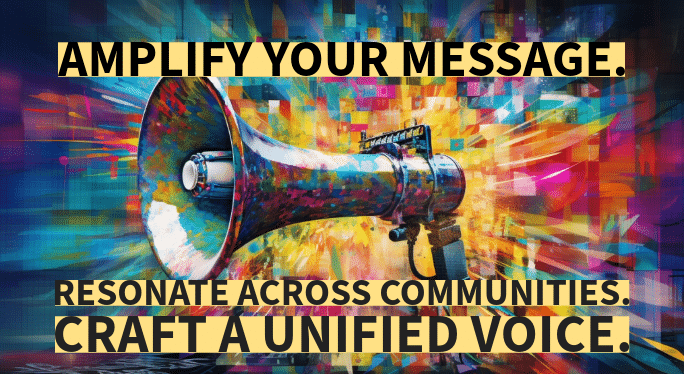
A targeted communications strategy is a plan of action designed to effectively convey a message to a specific audience. Analyzing the audience is crucial when developing a communications strategy as it helps tailor the message according to their interests, beliefs, and needs, maximizing the effectiveness of the communication. By understanding the audience, organizations can create messages that resonate with their target audience, leading to better engagement and response.
For example, a company launching a new fitness product would analyze their target audience to determine their interests, lifestyle, and fitness goals. Based on this analysis, they can develop a communications strategy that highlights the product’s benefits and how it can help the audience achieve their fitness goals. This targeted approach increases the chances of capturing the audience’s attention and motivating them to take action.
Identifying Target Audiences
Target audiences can be identified based on shared traits and commonalities such as age, location, occupation, interests, and more. By understanding these characteristics, organizations can tailor their messages to resonate with their target audience.
For example, a clothing brand targeting young adults may identify their target audience as individuals aged 18-25, living in urban areas, and interested in fashion and trends. By identifying these shared traits, the brand can create marketing campaigns that appeal specifically to this demographic, using language, imagery, and references that resonate with them.

Understanding the Audience
Demographic Profiles
Demographic profiles provide statistical data about the audience’s age, gender, income, education, etc. This information helps create a clear picture of the audience and guides the messaging strategy.
For instance, a car manufacturer targeting families would analyze demographic data to understand the age range of parents, household income, and location. Based on this data, the manufacturer can create advertising campaigns that emphasize the safety, spaciousness, and affordability of their family-friendly vehicles.
Psychographic Profiles
Psychographic profiles delve deeper into the attitudes, values, and lifestyle of the audience. They provide a more detailed understanding of what motivates the audience and how they are likely to respond to different messages.
For example, a travel agency targeting adventure enthusiasts may analyze psychographic data to understand the audience’s desire for thrilling experiences, their willingness to take risks, and their preference for off-the-beaten-path destinations. Armed with this knowledge, the travel agency can create messaging that highlights unique, adrenaline-pumping adventures, appealing directly to their target audience.
Gathering Information on Foreign Audiences
Translation services can assist in gathering information about foreign audiences by providing accurate translations of foreign texts and cultural insights. They help understand the language, cultural nuances, and attitudes of foreign audiences.
For instance, a company expanding its business into a new country can utilize professional translation services to understand the local language and cultural norms. By translating their website, marketing materials, and customer support resources, they can effectively communicate with their foreign audience and adapt their messaging to align with cultural sensitivities and preferences.
Anticipating and Respecting the Audience’s Culture
Anticipating and respecting the audience’s culture is crucial in communication to build trust, avoid misunderstandings, and establish rapport. By researching the audience’s cultural norms, taboos, idioms, and symbols, organizations can incorporate these insights into their communication strategy.
For example, a multinational company conducting a marketing campaign in a foreign country would research the cultural norms and values of that country. They would avoid using offensive language or imagery and instead focus on messages that align with the local culture. This cultural sensitivity helps create a positive perception of the company among the target audience and fosters a strong connection.
Organizational Culture and Discourse Community
Organizational culture, including its values, norms, and practices, influences how members of the organization communicate and interact. Understanding the concept of a discourse community is also important as it is a group of people who share common goals, practices, and language in communication.
For instance, an environmental nonprofit organization with a culture of sustainability and activism would craft messages that reflect their values and resonate with their discourse community. By using language and imagery that align with their culture and meeting the expectations of their community, their messages are more likely to be well-received and understood.

Creating Messages that Reflect the Organization’s Culture
Messages that reflect the organization’s culture are more likely to be successful as they are consistent with the organization’s values and norms. By meeting the expectations of the discourse community, messages can build trust, enhance understanding, and drive engagement.
For example, a tech startup with a culture of innovation and creativity would craft messages that reflect their cutting-edge approach. By using language and visuals that align with their culture, they can attract like-minded individuals and position themselves as leaders in their industry.
Key Factors for Developing a Targeted Communications Strategy
Understanding the audience through demographic and psychographic profiles, respecting their culture, aligning messages with the organization’s culture, and meeting the expectations of the discourse community are key factors for developing a targeted communications strategy.
For instance, a nonprofit organization targeting millennials interested in social justice issues would analyze demographic data to understand their age range, educational background, and interests. They would also analyze psychographic data to understand their values, motivations, and preferred communication channels. By ensuring their messages align with the organization’s culture and meet the expectations of the discourse community, the organization can effectively reach and engage their target audience.

Sage advice and thank you. I find that when writing just about anything online, we do have to have in mind the many different cultures that are reading what we write do or say. There has to be respect in order to be taken seriously and gain respect.
-Donna